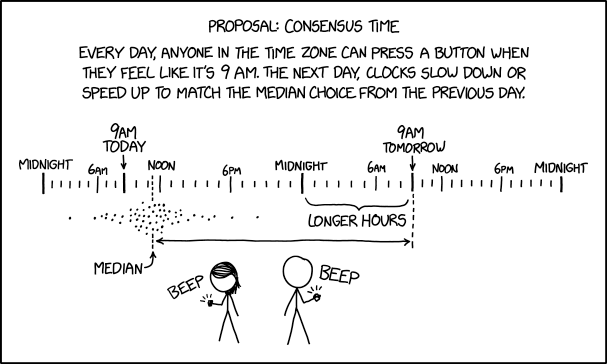Wednesday, March 31, 2010
Blockbusters, Franchises and Apostrophes
The story so far: last week Andrew Gelman had a post on a book that discussed the dominance of best seller lists and suggested that it was due to their increased quality and respectability. I argued that the quality and respectability had if anything decreased (here), posted some background information (here and here) then discussed how the economics of publishing from the late Nineteenth Century through the Post-War era had influenced genre fiction. The following closes with a look at where we are now and how the current state of the market determines what we're seeing at the bookstore.
As the market shrank in the last part of the Twentieth Century, the pay scale shifted to the feast and (mostly) famine distribution of today. (The century also saw a similar shift for musicians, artists and actors.) Non-paying outlets sprang up. Fan fiction emerged (non-licensed use of characters had, of course, been around for years -- Tiajuana bibles being a classic example -- but fan fiction was written for the author's enjoyment without any real expectation of payment). These changes are generally blamed on the internet but the conventional wisdom is at least a couple of decades off. All of these trends were well established by the Seventies.
With the loss of the short story market and the consolidation of publishing, the economics of writing on spec became brutal. Writing and trying to sell a novel represents a tremendous investment of time and energy with little hope of success. By comparison writing on spec in the Forties meant coming up with twelve to fifteen pages then sending them off to twenty or so potential markets. The best of these markets paid good money; the worst were hungry for anything publishable.
The shift from short story to novel also meant greater risk for the publisher (and, though we don't normally think of it in these terms, for the reader who also invested money and time). A back-pages story that most readers skipped over might hurt the sales and reputation of a magazine slightly but as long as the featured stories were strong, the effect would be negligible. Novels though are free-standing and the novel gets that gets skipped over is the novel that goes unsold.
When Gold Medal signed John. D. MacDonald they knew were getting a skilled, prolific writer with a track record artistically and commercially successful short fiction. The same could be said about the signing of Donald Westlake, Lawrence Block, Joe Gores and many others. Publishing these first time authors was a remarkably low risk proposition.
Unfortunately for publishers today, there are no potential first time authors with those resumes. Publishers now have to roll the dice on inexperienced writers of unknown talent and productivity. In response to that change, they have taken various steps to mitigate the risk.
One response was the rise of the marketable blockbuster. The earliest example I can think of is the book Lace by Shirley Conran. If memory serves, Lace got a great deal of attention in the publishing world for Conran's huge advance, her lack of fiction-writing experience, and the role marketing played in the process. The general feeling was that the tagline ("Which one of you bitches is my mother? ") came first while the book itself was merely an afterthought.
More recently we have Dexter, a marketer's dream ("He's a serial killer who kills serial killers... It's torture porn you can feel good about!"). The author had a few books in his resume but nothing distinguished. The most notable was probably a collaboration with Star Trek actor Michael Dorn. The first book in the series, Darkly Dreaming Dexter was so poorly constructed that all of the principals had to act completely out of character to resolve the plot (tip for new authors: when a character casually overlooks her own attempted vivisection, it's time for a rewrite*).
The problems with the quality of the novel had no apparent effect on sales, nor did it prevent the character from appearing in a successful series of sequels and being picked up by Showtime (The TV show was handled by far more experienced writers who managed to seal up almost all of the plot holes).
The point here is not that Darkly Dreaming Dexter was a bad book or that publishing standards have declined. The point is that the economics have changed. Experienced fiction writers are more rare. Marketable concepts and franchises are more valuable, as is synergy with other media. The markets are smaller. There are fewer players. And much of the audience has a troublesome form of brand loyalty.
Normally of course brand loyalty is a plus, but books are an unusual case. If you convince a Coke drinker to also to drink Sprite you probably won't increase his overall soda consumption; you'll just have cannibalization. But readers who stick exclusively with one writer are severely underconsuming. Convince James Patterson readers to start reading Dean Koontz and you could double overall sales.
When most readers got their fiction either through magazines or by leafing through paperback racks, it was easy to introduce them to new writers. Now the situation is more difficult. One creative solution has been apostrophe series such as Tom Clancy's Op Center. Other people are credited with actually writing the books but the name above the title is there for branding purposes.
Which all leads us back to the original question: Why did thrillers become so dominant?
They tend to be easily marketable.
They are compatible with franchises.
They lend themselves to adaptation as big budget action movies.
Their somewhat impersonal style makes them suitable for ghosting or apostrophe branding.
They are, in short, they are what the market is looking for. As for me, I'm looking for the next reprint from Hard Case, but I might borrow the latest Turow after you're done with it.
* "Is that a spoiler?"
"No, sir. It was spoiled when I got here."

